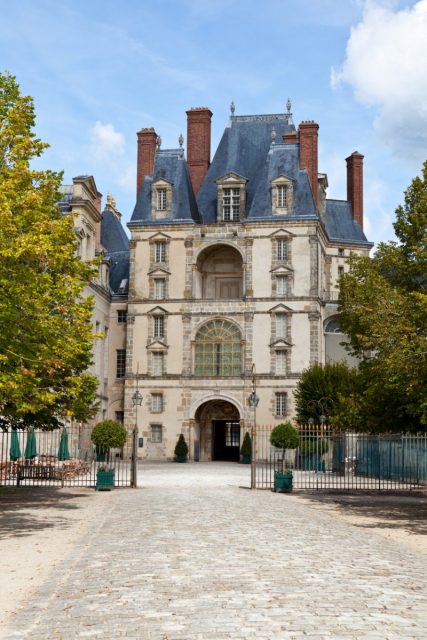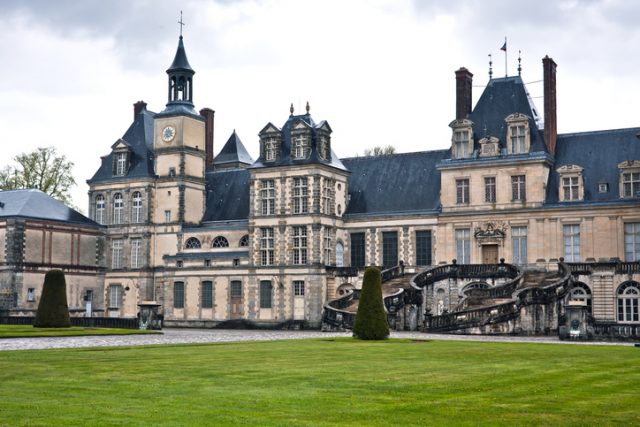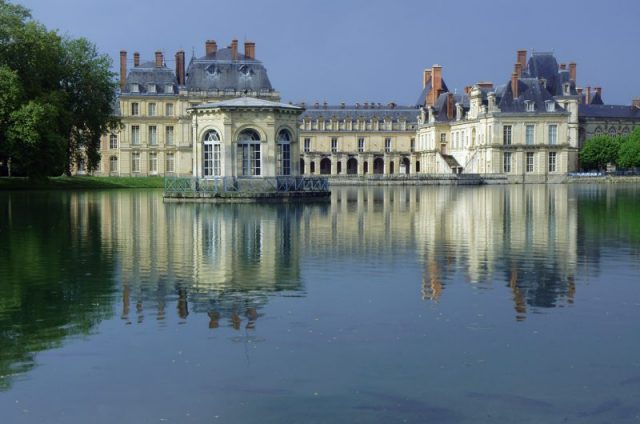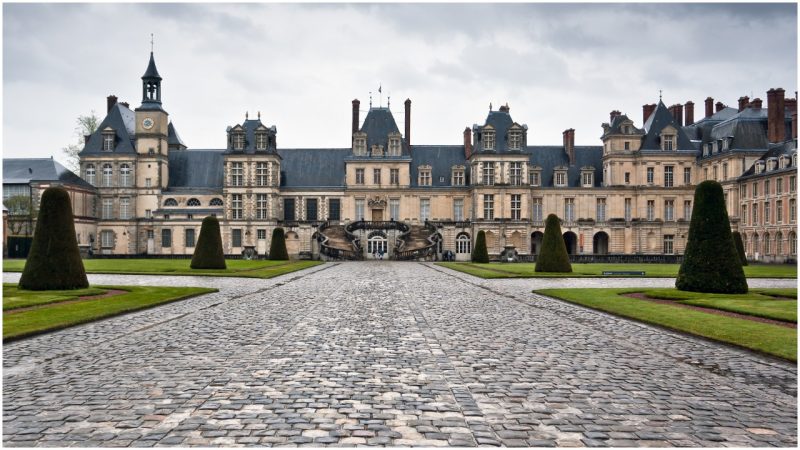The most famous royal residence in France is the Palace of Versailles; however, that doesn’t necessarily mean it is the most beautiful nor the most historically significant. While Versailles was home to only three kings of France, one royal château was home to the French monarchs for 800 years. Each of them contributed to the grandeur and royal splendor of the Palace of Fontainebleau.
It is situated 40 miles southeast of Paris in the charming town of Fontainebleau. The town is surrounded by a forest, and in the Middle Ages it was the perfect spot for one of the favorite hobbies of the nobility: hunting. In fact, the original construction on the site was a royal hunting lodge, built in the 12th century.
Louis IX was the first monarch to enlarge the pavilion in the 13th century. Today, only one tower remains as a reminder of the medieval castle that stood on the site, because it was completely rebuilt in the 16th century. Francois I entrusted some of the best French architects to transform it into a Renaissance château. He also restored the Saint Saturini Chapel, built in the 12th century.
The impressive fresco, carved woodwork, and stucco décor of the interior are well-preserved to this day. The king brought prominent artisans from Italy, such as Primaticcio, Rosso, Serlio, and Dell’Abate, who created the First School of Fontainebleau. Many rooms are decorated with the king’s emblem of a salamander and his initials. Among the beautiful paintings that decorated the interior walls were also masterpieces by Leonardo da Vinci, including the famous Mona Lisa. Francois I also initiated the creation of a Renaissance garden.

After Francois I’s death, his son, Henry II, and Henry’s wife, Catherine de Medici, once again expanded the palace. The interior of the new wings were decorated by Flemish and French artists, who created the Second School of Fontainebleau. Catherine hosted many extravagant balls and celebrations in the palace. She stayed in the lavishly decorated royal apartments that overlooked Jardin de Diane, named after Roman goddess of hunting Diana whose statue decorates the fountain.
Louis XIV was more concerned with the work on the Palace of Versailles, so he didn’t continue to enlarge the palace. However, he commissioned the landscape artist André Le Nôtre, known for his work at the Gardens of Versailles, to redesign the gardens. In the Palace of Fontainebleau, in 1685, he signed the Revocation of the Edict of Nantes, which signified the end of the equal rights of Protestants that had been issued in the edict by Henry the Great in 1598.

But perhaps no royal favored the palace as much as the first emperor of France, Napoleon Bonaparte. After the French Revolution, he restored the palace and, before his coronation, he invited Pope Pius VII to the palace and redecorated his apartments with artworks taken from the Vatican. Afterwards, the emperor transformed the bedroom of the king into his own throne room.
However, the palace not only witnessed his triumph, but also his downfall. Here, in 1814, Napoleon signed his abdication and said his final goodbye to the guards from the beautiful 17th-century staircase in the Cour des Adieux (Farewell Courtyard), named after the event.

Later, from the island of Saint Helena, Napoleon would write: “the true residence of Kings, the house of the centuries. Perhaps it was not a rigorously architectural palace, but it was certainly a place of residence well thought out and perfectly suitable. It was certainly the most comfortable and happily-situated palace in Europe.” Today, the palace hosts a museum dedicated to Napoleon.
Related story from us: Bothwell Castle, fought over by the English and the Scots for centuries
Many treaties, international meetings, and royal celebrations have taken place in the Palace of Fontainebleau. It is one of the largest residences in France with more than 1,500 rooms. In 1981, the palace and its gardens were listed a UNESCO World Heritage Site.
